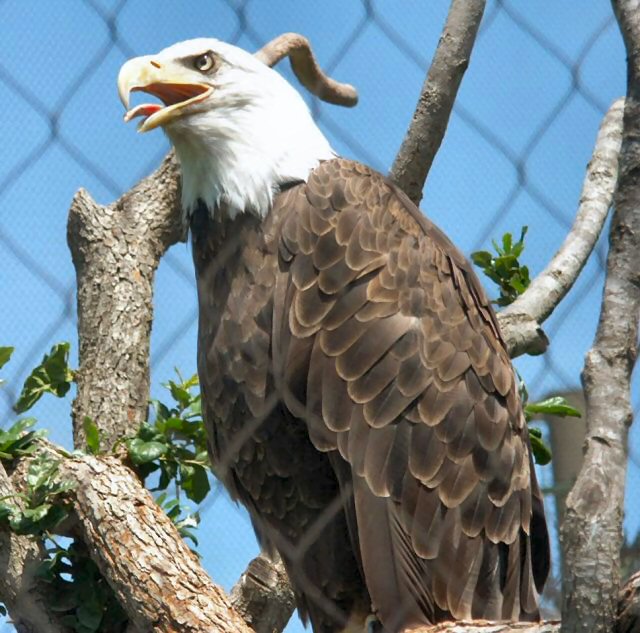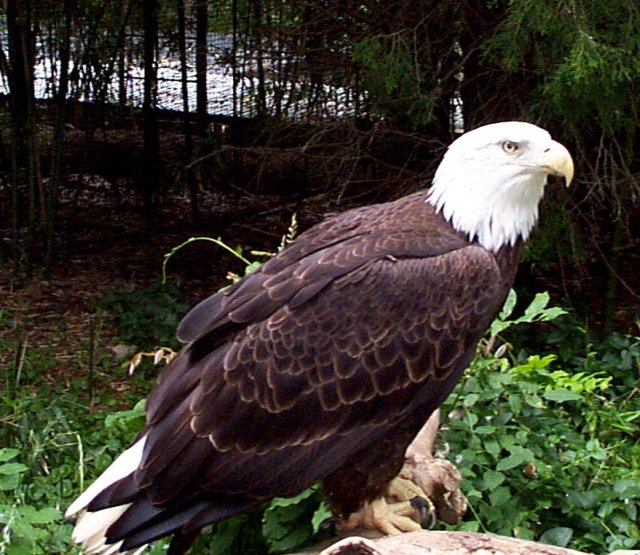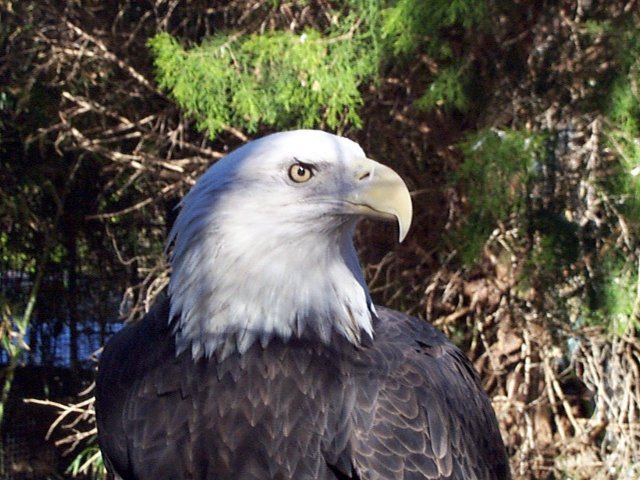Physical Description:
The Bald Eagle has a wing span of 6.5-8 feet. The body of the eagle
is usually 31- 37 inches weighing between 9 and 18 pounds. At
birth, the feathers of a Bald Eagle are light gray. As the offspring
grow, they develop feathers that are dark brown when they are about 12 weeks
old. Finally, during the eagle's third and fourth year they begin to
develop the distinctive white feathers that are on the head and tail.
General Information:
The Bald Eagle is the only eagle species that is found exclusively in North
America. They are often found in many of the northwestern states of
the U.S. and Canada. The founding fathers, of the United States, made
the Bald Eagle the United States' national symbol in 1782. Bald Eagles
migrate south during the winter following fowl and other forms of food.
Bald eagles rely on fish to find food so you will often find them near lakes,
rivers, or streams. Eagles make their nests in the tops of tall trees
or on the side of a cliff.
Feeding Habits:
Bald Eagles often feed on fish which they will catch themselves, find dead,
or pirate from other birds such as the Osprey. They will also feed on
a variety of carrion, or live prey including water fowl, rabbits, turtles,
and snakes. Eagles dive down to capture their prey and then carry it
off in flight. However, they can only carry about half of their own
body weight.
Special Adaptations:
Bald Eagles use wind currents to stay aloft and soar for hours at a time.
Their massive wing span allows the warm currents to keep the eagle in the
air. The eyes, of the Bald Eagle, are very powerful allowing the eagle
to see small animals while flying high in the sky. The talons of the
birds are very powerful allowing the eagle to catch its prey and carry it
off to eat.
Comments: I
believe that captivity has made a high impact on the Bald Eagle. Having
eagles close, where they can be studied, has helped us understand the stress
that is put upon them with the loss of their natural habitat. However,
the eagles migration habits cannot be studied in captivity.
Current Research:
The Bald Eagle is off of the endangered species list, but the population of
the species is still a great concern. Studies have shown that there
has been a steady increase in the Bald Eagle population over the last few
years. Researchers are also trying to find new ways to preserve the
Bald Eagles natural habitat by studying the nesting and feeding habits of
the eagles.



